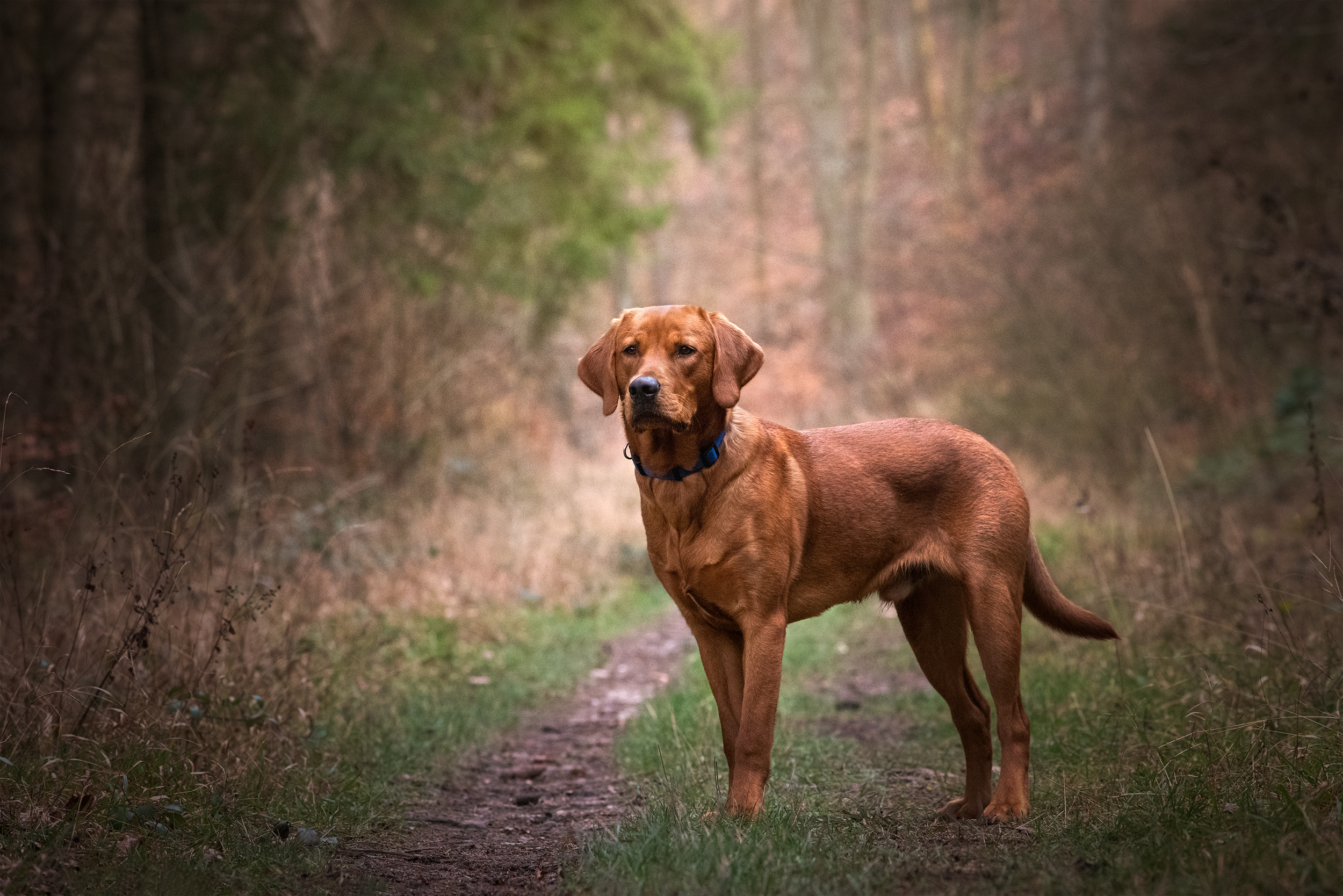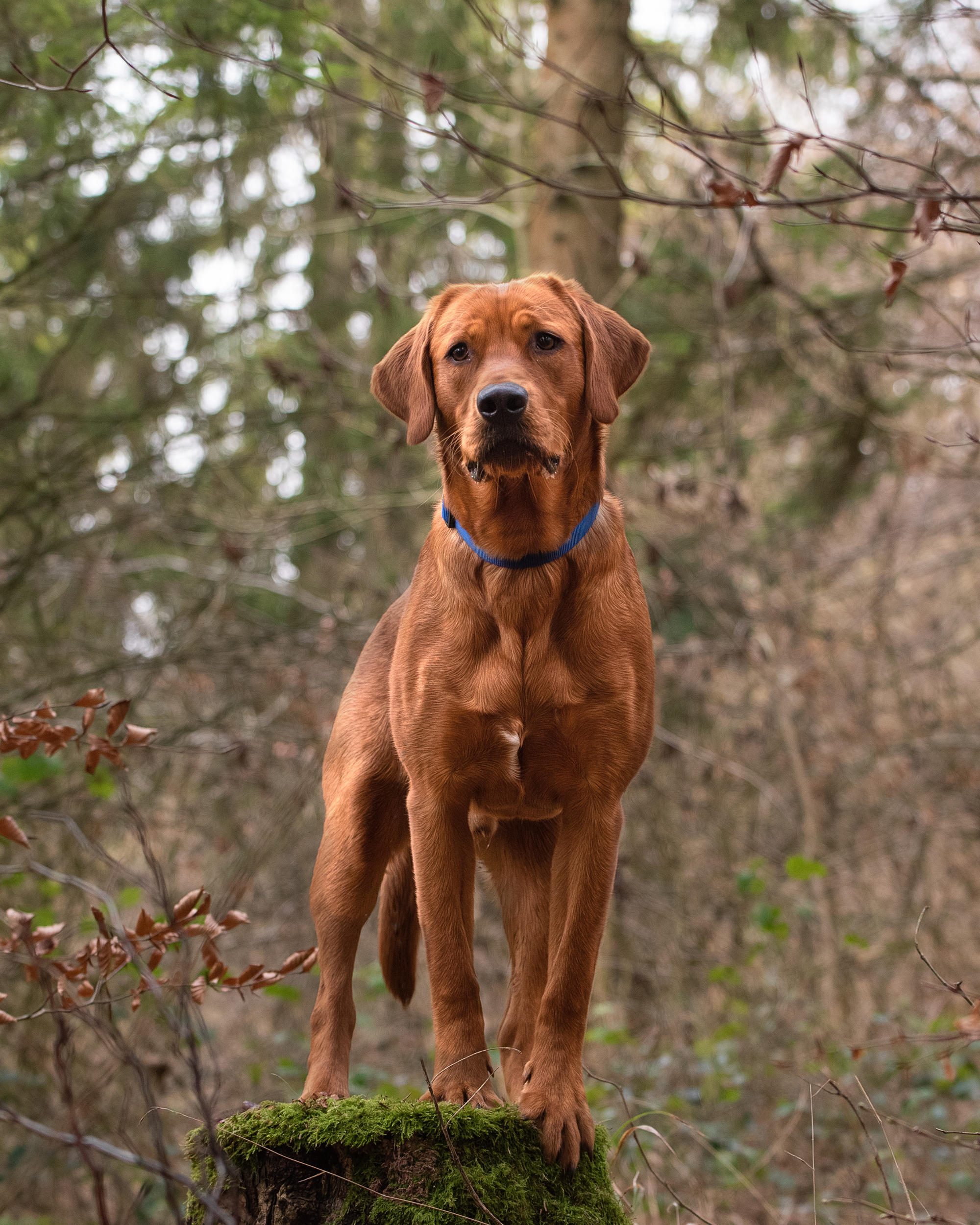If I had a pound every time I heard that statement I would be RICH. I do understand that it is a concern for many especially if the concept of modern training is new to you. We do say ‘reward your dog’ quite a lot, especially when you have a young puppy or older dog learning something new. Having lots to learn, it is a concern they will end up eating constantly.
We are nation warned about the ill effects of obesity in ourselves and our dogs and no one wants to have an overweight dog.
Here are a couple of photos of Remus, my 11month old Fox Red Labrador, a toned, muscular boy with easily seen and felt ribs, he has been trained primarily using food rewards since the day he came home. Feeding food rewards will NOT necessarily make your dog fat…. if you do it right.


Why do we use food?
Using food to train is extremely effective as it helps dogs to learn and can change emotions by raising the levels of Dopamine in the brain and creating a desire to move towards or find food. Seeking or eating stimulates the ‘thinking’ part of the brain to help them begin to think more rationally and promote calmness.
We generally use lots of rewards when a dog is learning something new but we can reduce the frequency of treats once they understand what we would like from them.
What does the word treat mean?
As people we tend to think of the word ‘treat’ as something special, a day out, special gift, yummy food such as takeaway or cake. Which makes us think that a dog’s treat should also be something special or possibly unhealthy.
Rewards
Instead of using the word ‘treat’ try to replace it with ‘reward’. We’ve all seen that children now have a reward chart to promote good behaviour or enthusiasm, we don’t give them a chocolate bar every time they get something right but we do give them a reward/point to build up to something special.
With dogs a reward doesn’t HAVE to be food, as mentioned above food is often most effective but we can also use toys, verbal praise, affection or giving them something they want.
Is it bribery?
It is a common perception that using food to train is glorified bribery, however there is a big difference between bribery and reward. The main difference is that a BRIBE comes BEFORE, whereas a REWARD comes AFTER. If a dog is being bribed it will only ‘perform’ when there is food in sight or on offer, whereas a dog who is rewarded will offer a behaviour in the hope of getting something afterwards.
When used effectively a dog will offer things that have been previously rewarded in the hope they will be rewarded again, when your dog is happily offering a behaviour you can reduce how often you reward that behaviour with food or play and begin to use environmental rewards instead.
For example, when teaching a sit we might lure our dog into position and reward them EVERY time to begin with, once they understand what we would like they will sit without being lured and you can mix up your rewards (food, toys, praise, affection) and not necessarily reward EVERY sit. Once they are sitting superstars you can ask them to sit in different circumstances; before they have dinner, before you open a door or before you cross a road. The ‘reward’ then becomes access to dinner, access to the garden or continuing with their walk.
How do I use food to reward and ensure my dog doesn’t put on weight?
Choose your food rewards wisely! Make sure the food rewards you are using are healthy, many ‘treats’ aren’t actually that healthy for your dog so read the packet and check what ingredients are used. The first ingredient on the list is usually the main ingredient. If there are lots of ingredients you haven’t heard of these are likely to be additives, preservatives, colouring etc, find out what they are!
Where possible try to use 100% natural treats, some dogs will happily enjoy apple, carrots, blueberries and other healthy alternatives.
Not extras! Food rewards used in training should NOT be extra food but part of your dog’s daily food allowance. You can keep part or all of your dog’s usual daily food to use when training. If using more exciting high-value treats, reduce your dog’s meal time allowance to accommodate for the extras used in the day.
Good things come in small packages! Food rewards do not have to be large; your dog won’t mind how much food there is, it’s more about the taste. Keep your food rewards as small as possible. A pea-sized piece of food is plenty, but you can go smaller. The smaller the food pieces the more you can reward.
Be generous but do it wisely! The frequency of food rewards is more important than the quantity. Having lots of very small food rewards means you can reward 10 behaviours with the same amount of food as 1 large piece of food.
Here are some of Dave & Remus’ favourite healthy treats;
JR Pate – https://www.jrpetproducts.com/pure-pate-dog-treats/?v=79cba1185463
Finer by Nature Goose training treats – https://www.finerbynature.co.uk/shop/goose-trainers-small-bite/
Butternut Box treats - https://www.facebook.com/watch/?v=3174599829222585